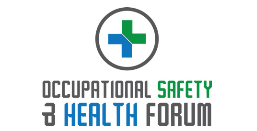Effective incident reporting is fundamental to occupational health and safety (OHS), ensuring that hazards are addressed promptly and future risks mitigated. For senior OHS professionals in the UK’s private and public sectors, choosing the right incident reporting solution partner is crucial for maintaining workplace safety, regulatory compliance, and operational efficiency. Here’s a structured approach to sourcing the best solution partner for your organisation, based on input from delegates and suppliers at the Occupational Safety & Health Forum…
1. Define Objectives and Requirements
Start by assessing your organisation’s unique needs. Identify your key goals, such as improving response times, ensuring compliance with regulations like RIDDOR (Reporting of Injuries, Diseases and Dangerous Occurrences Regulations), or fostering a stronger safety culture.
Consider the scope of your reporting needs, including whether you require solutions for single or multiple sites, remote workers, or specific industries like healthcare, manufacturing, or construction. Document these requirements to guide your partner selection process.
2. Evaluate Partner Expertise and Customisation Options
Select a partner with a proven track record in delivering industry-specific solutions. Look for case studies or references that demonstrate their ability to address similar challenges in organisations of your size and sector.
Customisation is key. Choose a partner that can tailor their platform to your organisation’s unique processes, such as bespoke reporting templates, automated escalation protocols, or dashboards that align with your KPIs. A flexible, customisable solution ensures relevance and effectiveness.
3. Prioritise Technology and Ease of Use
Modern incident reporting systems leverage advanced technology to improve efficiency and engagement. Look for cloud-based platforms that enable real-time reporting and remote access. Features like mobile apps empower employees to report incidents on the go, attaching photos, videos, or geolocation data to provide richer context.
Systems with AI-driven analytics and automated reporting workflows enhance efficiency by identifying trends and potential risks early. However, these tools should also be intuitive, ensuring high adoption rates among employees.
4. Consider Costs and ROI
Incident reporting solutions come with a range of pricing models, from subscription-based software to one-off licenses. Assess the return on investment (ROI) by calculating how improved reporting can reduce incident rates, avoid regulatory penalties, and lower long-term operational costs.
5. Ensure Ongoing Support and Scalability
Select a partner that offers ongoing support, including training, updates, and customer service. Scalable solutions are essential to accommodate organisational growth or evolving regulatory requirements.
By aligning organisational needs with advanced, customisable, and cost-effective solutions, senior OHS professionals can select an incident reporting partner that drives safety, compliance, and operational excellence. The right partner will not only enhance current processes but also future-proof the organisation’s approach to workplace safety.
Are you searching for Incident Reporting solutions for your organisation? The Occupational Safety & Health Forum can help!
Photo by Towfiqu barbhuiya on Unsplash




